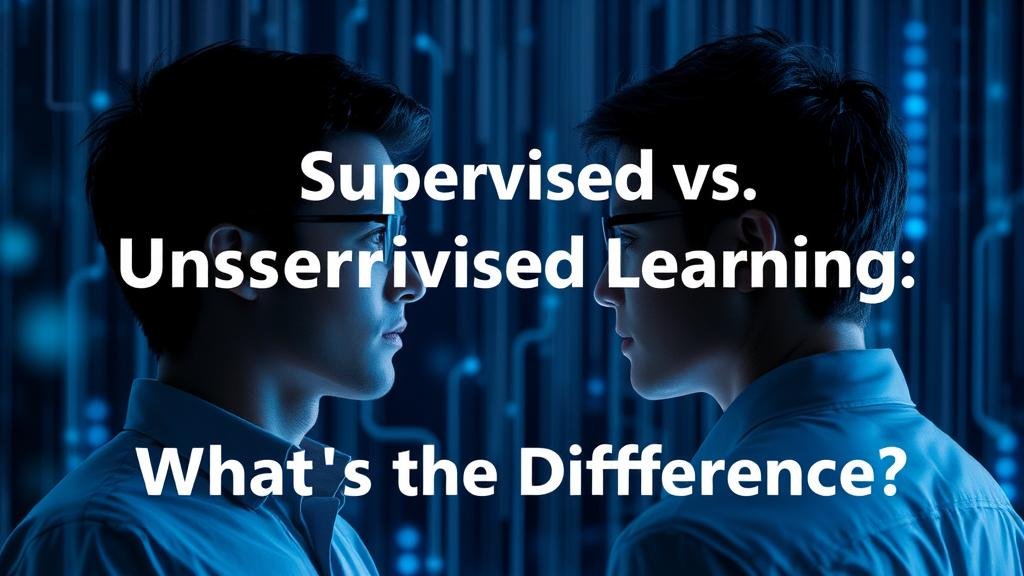Prompting Readers to Consider New Possibilities
What if your trading strategies could react in milliseconds? Algorithmic investing makes this possible—let’s explore the potential.

Supervised vs. Unsupervised Learning: What’s the Difference?
In the rapidly evolving world of machine learning, two fundamental techniques serve as the backbone of many systems: supervised and unsupervised learning. These methodologies, though they sound complex, can be distilled into understandable concepts. In this article, we will delve into the intricate world of machine learning, dissecting the differences between supervised and unsupervised learning, their real-world applications, and how they are shaping the future of technology.
Supervised learning is a type of machine learning where a model is trained using labeled data. In simpler terms, the model learns from data that has already been categorized.
Key Features of Supervised Learning
- The model is presented with example inputs and their desired outputs, provided by a “teacher.”
- The goal is to learn a general rule that maps inputs to outputs.
- It’s mainly used in applications where historical data predicts likely future outcomes.
For instance, a simple example of supervised learning could be teaching a computer to recognize images of cats. The computer would be trained with a multitude of images that are labeled either “cat” or “not cat” and, over time, would learn to identify what characteristics tend to belong to images labeled “cat.”
What is Unsupervised Learning?
Unsupervised learning, on the other hand, involves training a model using information that is neither classified nor labeled. The system isn’t given the correct answer; instead, it must find patterns and relationships in the data.
Key Features of Unsupervised Learning
- The model is not provided with the correct results during the training.
- It can be used to draw inferences from datasets consisting of input data without labeled responses.
- It’s commonly used for clustering population in different groups, which is widely used in market segmentation.
An example of unsupervised learning could be a retailer using customer data to analyze purchasing behavior. The retailer doesn’t know in advance what patterns the algorithm will find. After the algorithm has processed the data, the retailer might discover clusters of customers who make similar types of purchases, who buy at similar times, or who have similar demographic characteristics.
Supervised vs. Unsupervised Learning: The Key Differences
Now that we’ve defined both types of learning, let’s look at their key differences:
- **Data Labeling**: In supervised learning, the training data is labeled and provides a clear direction towards the outcome. However, in unsupervised learning, the data is unlabeled and the model must figure out the inherent structure within it.
- **Use Cases**: Supervised learning is often used in applications where the goal is to predict a specific outcome. Unsupervised learning, on the other hand, is utilized when the goal is to explore the data and find some structure within.
- **Complexity**: Supervised learning can be simpler to implement and understand, given the clear outcomes it provides. On the contrary, unsupervised learning can be more complex and harder to understand, given its exploratory nature.
Real-World Applications
Both supervised and unsupervised learning have a myriad of real-world applications.
- Supervised Learning Applications**:
- Email spam filters: The algorithm is trained with many example emails with their labels (spam or not spam).
- Credit score prediction: Using historical data about a person’s loans, repayments, and defaults, a model can predict a person’s credit score.
- Unsupervised Learning Applications**:
- Market segmentation: Retailers can use unsupervised learning to find clusters of customers based on purchasing behavior, demographics, and other characteristics.
- Anomaly detection: For example, detecting unusual patterns or outliers in transaction data that may signal fraudulent activity.
Conclusion
In conclusion, both supervised and unsupervised learning have their unique strengths and uses. Depending on the problem at hand, the nature of the data available, and the specific goals of the model, one may choose to use either of these approaches. As we continue to push the boundaries of what machine learning can accomplish, understanding these fundamental techniques will become ever more important.


